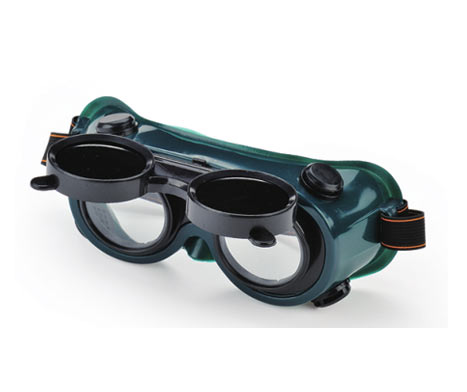According to U.S. government agencies, there are about 2,000 on-the-job eye injuries every day due to not wearing any type of eye safety equipment or wearing the wrong equipment for the job. Most injuries are caused by electric arcs and heat rays as well as flying debris such as dust and metal. To avoid injury or blindness on welding jobs, it's not enough to simply wear normal goggles and helmets.
In this article from T-Safety, we will talk about safety requirements that all eye protection for welding should meet, and address a few things you need to look for in your welding eye protection.

1.The Right Lens Color
In welding, while flying debris is a major safety concern, your eyes must also be protected from hazards such as radiation. Wearing goggles, shields or helmets with the correct lens color for the welding work you are doing can prevent these types of injuries. For example, clear lenses are adequate for general indoor work that requires only impact protection. Gold, blue and silver lenses protect the eyes from harsh sunlight by reflecting and reducing the amount of incoming light. For low-light work, use amber-colored safety glasses or goggles.
2.The Right Filter Shades
In addition to lens color, your eye protection for welding should have the correct filter shade to protect the eyes, especially from radiation. Low shade number lenses like 1.5 are ideal for torch welding. Those lenses with a higher filter shade number, such as 15, should be used for arc welding. In general, the higher the number, the less radiation will pass through your welding goggles.
3.The Right Fit for Welding
The color of the lenses and the shade of the filter don't mean much if the welding eye protection itself doesn't fit properly. Make sure the goggles you choose will fit securely on your nose and not slip off due to sweat. They should also fit appropriately close to your face. If they are too tight, they will create large gaps in the corners, making you vulnerable to injury. As for the helmet, make sure it fits snugly enough to stay on whether you pull it up or down.
It is important for welders to check their protective welding eyewear before each use. They should replace lenses that are too scratched to see through. Goggles with cracked or dented lenses may be prone to shattering. They should also replace goggle straps that are knotted, twisted or stretched.
Although they are considered a secondary form of eye protection, face shields and welding helmets must be worn with safety goggles or glasses with side shields. Only one form of eye protection is inadequate. If welders do not use safety glasses with side shields, they may be burned by flashes of ultraviolet light.
Welding goggles should be vented to minimize lens fogging. Specially designed eye protection for welding is the best choice for welders if dust, fumes, mists, gases or vapors are present.
Eye protection should be wiped clean of dust and dirt after use. Some lens cleaning solutions are designed not to damage special coatings. Cleaned glasses should be stored in a closed container away from dust, moisture, direct sunlight, heat and other factors that may reduce their effectiveness.
Copyright © Hebei Sinotools Industrial Co.,Ltd. All Rights Reserved | Powered by  Sitemap
Sitemap